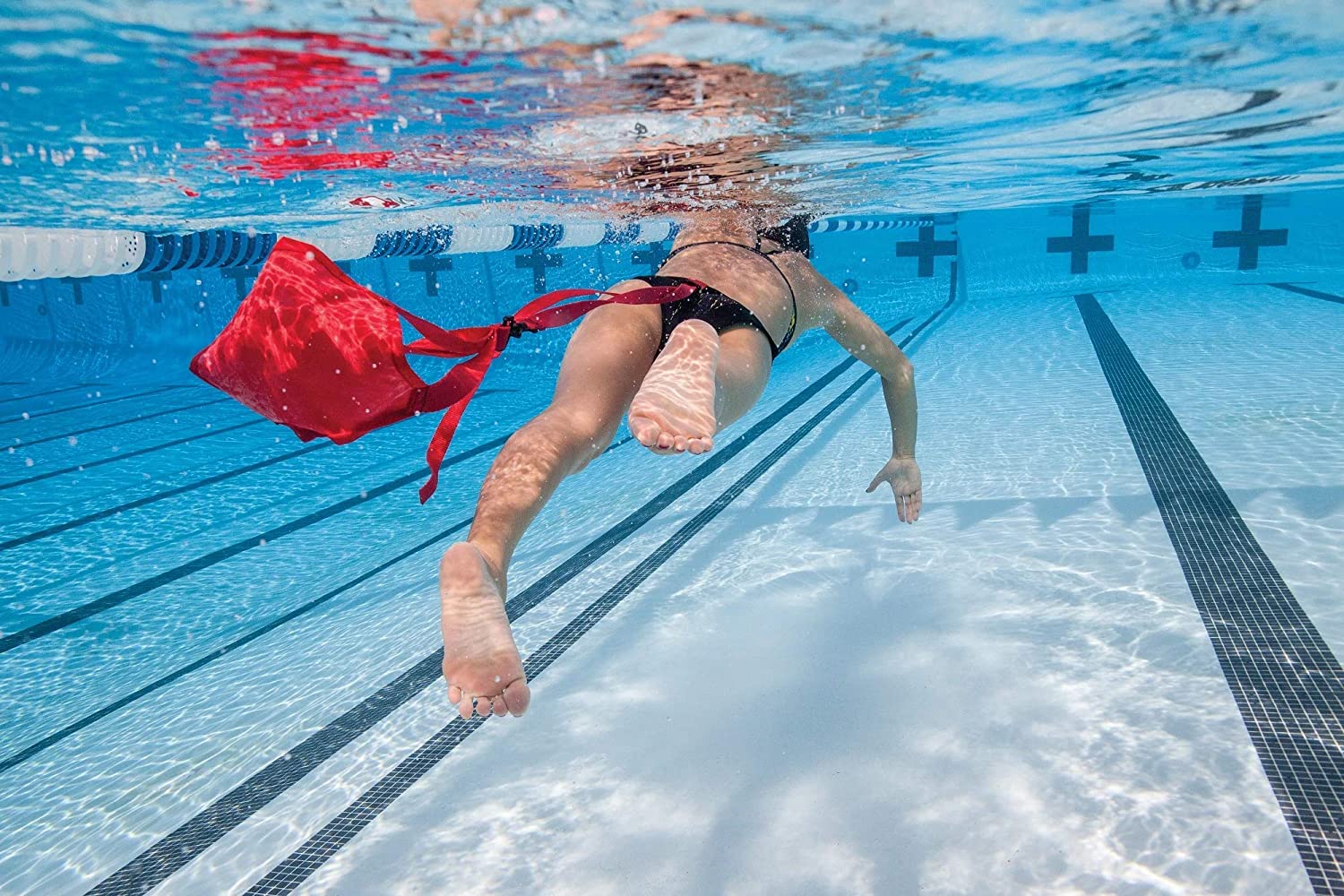Efeito de Diferentes Tipos de Treinamento de Força no Desempenho de Natação em Nadadores Competitivos
Uma Revisão Sistemática

Downloads
Palavras-chave:
Especificidade, Natação, Treinamento, Desempenho, Treinamento de forçaResumo
Background
O treinamento de força é amplamente utilizado na natação para melhoria no desempenho. Existem várias maneiras de embarcar no treinamento de força, que em diferentes graus segue o princípio da especificidade. Existem divergências na literatura sobre quais métodos de treinamento levam a maiores melhorias de desempenho e até que ponto o treinamento de resistência deve ser específico para natação para transferir para o desempenho na performance.
Objetivo
O estudo foi realizado para examinar [1] como diferentes abordagens de treinamento de força para nadadores competitivos podem melhorar o desempenho na natação e [2] qual forma de treinamento de força resultou na mais relevante melhoria no desempenho da natação.
Métodos
Uma revisão sistemática da literatura foi realizada usando as seguintes bases de dados: PubMed, SPORTDiscus e Scopus. Os estudos eram elegíveis se atendessem aos seguintes critérios: [1] intervenções de treinamento com duração superior a 3 semanas que investigassem os efeitos do treinamento de força no desempenho da natação, [2] envolvessem nadadores experientes ou jovens, [3] envolvessem treinamento de resistência para natação específico na água (Figura 1), treinamento de resistência semelhante à natação fora da água ou treinamento de força não específico fora d'água e [4] intervenções com resultados claros pré e pós-teste declarados. Artigos em língua não inglesa foram excluídos. A mudança percentual e a dimensão do efeito (ES) entre grupos foram calculados para comparar os efeitos de diferentes intervenções de treinamento.
Resultados
Uma série de estudos que investigam diferentes métodos de treinamento de força foram examinados. A mudança percentual no desempenho e ES entre grupos foram calculados; 27 estudos preencheram os critérios de inclusão. A revisão não revelou um consenso claro sobre qual método de treinamento de força foi o mais benéfico para o desempenho na natação. Todos os métodos tiveram grupos de intervenção que aumentaram seu desempenho na natação.
Conclusões
Esta revisão mostra que a natação difere de outros esportes por ser praticada na água, e isso demanda uma forma específica de treinamento. Os resultados mostram que um regime combinado de natação e treinamento de força parece ter um efeito melhor no desempenho de natação do que uma abordagem de treinamento apenas de natação. Com base no princípio da especificidade e ganhos no desempenho na natação, não há uma conclusão clara, pois os três principais métodos de treinamento de força revelaram ganhos semelhantes no desempenho da natação de 2 a 2,5%.
Referências
(1) Aspenes S, Karlsen T. Exercise-training intervention studies in competitive swimming. Sports Med. Auckland: Springer Nature B.V.; 2012. p. 527–43.
(2) Smith DJ, Norris SR, Hogg JM. Performance evaluation of swimmers. Sports Med. 2002;32(9):539–554.
(3) Stager JM, Tanner DA, Bixler BS. The handbook of sports medicine and science : swimming. Hoboken, UNITED KINGDOM: John Wiley & Sons, Incorporated; 2004.
(4) Holmér I. Swimming physiology. Ann Physiol Anthropol. 1992;11(3):269–276.
(5) Toussaint HM, Hollander AP. Energetics of competitive swimming. Sports Med. 1994;18(6):384–405.
(6) Lavoie J-M, Montpetit RR. Applied physiology of swimming. Sports Med. 1986;3(3):165–189.
(7) Barbosa T, Costa M, Marinho D. Proposal of a deterministic model to explain swimming performance. 2013.
(8) Trappe S, Pearson DR. Effects of weight assisted dry-land strength training on swimming performance. J Strength Cond Res. 1994;8(4):209–213.
(9) Aspenes S, Kjendlie P-L, Hoff J, Helgerud J. Combined strength and endurance training in competitive swimmers. J Sports Sci Med. 2009;8(3):357.
(10) Barbosa T, Bragada JA, Reis VM, Marinho DA, Carvalho C, Silva AJ. Energetics and biomechanics as determining factors of swimming performance: updating the state of the art. J Sci Med Sport. 2010;13(2):262–269.
(11) Morouço P, Keskinen KL, Vilas-Boas JP, Fernandes RJ. Relationship between tethered forces and the four swimming techniques performance. J Appl Biomech. 2011;27(2):161–169.
(12) Girold S, Maurin D, Dugue B, Chatard J-C, Millet G. Effects of dry-land vs. resisted-and assisted-sprint exercises on swimming sprint performances. J Strength Cond Res. 2007;21(2):599–605.
(13) Batalha N, Raimundo A, Tomas-Carus P, Paulo J, Simão R, Silva AJ. Does a land-based compensatory strength-training programme influences the rotator cuff balance of young competitive swimmers? Eur J Sport Sci. 2015;15(8):764–772.
(14) Folland JP, Williams AG. Morphological and neurological contributions to increased strength. Sports Med. 2007;37(2):145–168.
(15) Costill D. A computer based system for measurement of force and power during front crawl swimming. J Swim Res. 1986;2:16–19.
(16) Sharp RL, Troup JP. Relationship between power and sprint freestyle. Med Sci Sports Exerc. 1982;14:53–56.
(17) Tanaka H, Swensen T. Impact of resistance training on endurance performance. Sports Med. 1998;25(3):191–200.
(18) Hawley JA, Williams M, Vickovic M, Handcock P. Muscle power predicts freestyle swimming performance. Brit J Sports Med. 1992;26(3):151–155.
(19) Crowe S, Babington J, Tanner D, Stager J. The relationship of strength to dryland power, swimming power, and swim performance. Med Sci Sports Exerc. 1999;31(5):S255.
(20) Garrido N, Marinho DA, Reis VM, van den Tillaar R, Costa AM, Silva AJ, et al. Does combined dry land strength and aerobic training inhibit performance of young competitive swimmers? J Sports Sci Med. 2010;9(2):300.
(21) Sadowski J, Mastalerz A, Gromisz W. Transfer of dry-land resistance training modalities to swimming performance. J Hum Kinet. 2020 09/25;74/2020:195–203.
(22) Crowley E, Harrison AJ, Lyons M. The impact of resistance training on swimming performance: a systematic review. Sports Med. 2017 2017/11/01;47(11):2285–307.
(23) Amaro NM, Marinho DA, Marques MC, Batalha NP, Morouço PG. Effects of dry-land strength and conditioning programs in age group swimmers. J Strength Cond Res. 2017;31(9):2447–2454.
(24) Valkoumas I, Gourgoulis V, Aggeloussis N, Antoniou P. The influence of an 11-week resisted swim training program on the inter-arm coordination in front crawl swimmers. Sports Biomech. 2020:1–13.
(25) Kutlukhan YO, Bilge M, Yildirim Kose DS. The effect of dry-land training on functional strength and swimming performance of 10–12 years old swimmers. 2020.
(26) Sammoud S, Negra Y, Bouguezzi R, Hachana Y, Granacher U, Chaabene H. The effects of plyometric jump training on jump and sport-specific performances in prepubertal female swimmers. J Exerc Sci Fitn. 2021;19(1):25–31.
(27) Sammoud S, Negra Y, Chaabene H, Bouguezzi R, Moran J, Granacher U. The effects of plyometric jump training on jumping and swimming performances in prepubertal male swimmers. J Sports Sci Med. 2019;18(4):805.
(28) Birrer RB, Levine R. Performance parameters in children and adolescent athletes. Sports Med. 1987;4(3):211–227.
(29) Papoti M, da Silva AS, Kalva-Filho CA, Araujo GG, Santiago V, Martins LB, et al. Tethered swimming for the evaluation and prescription of resistance training in young swimmers. Int J Sports Med. 2017;38(2):125–133.
(30) Kojima K, Brammer CL, Sossong TD, Abe T, Stager JM. In-water resisted swim training for age-group swimmers: an evaluation of training effects. Pediatr Exerc Sci. 2018;30(1):124–131.
(31) Mavridis G, Kabitsis C, Gourgoulis V, Toubekis A. Swimming velocity improved by specific resistance training in age-group swimmers. Port J Sport Sci. 2006;6(suppl 2):304–306.
(32) Girold S, Calmels P, Maurin D, Milhau N, Chatard J-C. Assisted and resisted sprint training in swimming. J Strength Cond Res. 2006;20(3):547.
(33) Barbosa A, Ferreira THN, Leis LV, Gourgoulis V, Barroso R. Does a 4-week training period with hand paddles affect front-crawl swimming performance? J Sports Sci. 2020;38(5):511–517.
(34) Dragunas AJ, Dickey JP, Nolte VW. The effect of drag suit training on 50-m freestyle performance. J Strength Cond Res. 2012;26(4):989–994.
(35) Gourgoulis VV, I., Boli A, Aggeloussis N, Antoniou P. Effect of an 11-week in-water training program with increased resistance on the swimming performance and the basic kinematic characteristics of the front crawl stroke. J Strength Cond Res. 2019 Jan;33(1):95–103.
(36) Konstantaki M, Winter EM. The effectiveness of a leg-kicking training program on performance and physiological measures of competitive swimmers. Int J Sports Sci Coach. 2007;2(1):37–48.
(37) Konstantaki M, Winter E, Swaine I. Effects of arms-only swimming training on performance, movement economy, and aerobic power. Int J Sports Physiol Perform. 2008;3(3):294–304.
(38) Toussaint HM, Vervoorn K. Effects of specific high resistance training in the water on competitive swimmers. Int J Sports Med. 1990;11(3):228–233.
(39) Roberts A, Termin B, Reilly M, Pendergast D. Effectiveness of biokinetic training on swimming performance in collegiate swimmers. J Swim Res. 1991;7(3):5–11.
(40) Naczk M, Lopacinski A, Brzenczek-Owczarzak W, Arlet J, Naczk A, Adach Z. Influence of short-term inertial training on swimming performance in young swimmers. Eur J Sport Sci. 2017;17(4):369–377.
(41) Sadowski J, Mastalerz A, Gromisz W, Niznikowski T. Effectiveness of the power dry-land training programmes in youth swimmers. J Hum Kinet. 2012;32(1):77–86.
(42) Schumann M, Notbohm H, Bäcker S, Klocke J, Fuhrmann S, Clephas C. Strength-training periodization: no effect on swimming performance in well-trained adolescent swimmers. Int J Sports Physiol Perform. 2020;2:1–9.
(43) Strass D. Effects of maximal strength training on sprint performance of competitive swimmers. Swimming Sci V. 1988:149–56.
(44) Weston M, Hibbs AE, Thompson KG, Spears IR. Isolated core training improves sprint performance in national-level junior swimmers. Int J Sports Physiol Perform. 2015;10(2):204–210.
(45) Sawdon-Bea J, Benson J. The effects of a 6-week dry land exercise program for high school swimmers. J Phys Educ Sports Man. 2015;2(1):1–17.
(46) Potdevin FJ, Alberty ME, Chevutschi A, Pelayo P, Sidney MC. Effects of a 6-week plyometric training program on performances in pubescent swimmers. J Strength Cond Res. 2011;25(1):80–86.
(47) Tanaka H, Costill Dl, Thomas R, Fink WJ, Widrick JJ. Dry-land resistance training for competitive swimming. Med Sci Sports Exerc. 1993;25(8):952–9.
(48) Junior EB, Aidar FJ, de Souza RF, de Matos DG, Camara MB, Gomes AAB, et al. Swimming performance evaluation in athletes submitted to different types of strength training. J Exerc Physiol online. 2016;19(6):1.
(49) Karpinski J, Rejdych W, Brzozowska D, Golas A, Sadowski W, Swinarew AS, et al. The effects of a 6-week core exercises on swimming performance of national level swimmers. PloS one. 2020;15(8):e0227394-e.
(50) Lopes TJ, Neiva HP, Gonçalves CA, Nunes C, Marinho DA. The effects of dry-land strength training on competitive sprinter swimmers. J Exerc Sci Fitn. 2021;19(1):32–39.
(51) Girold S, Jalab C, Bernard O, Carette P, Kemoun G, Dugué B. Dry-land strength training vs. electrical stimulation in sprint swimming performance. J Strength Cond Res. 2012;26(2):497–505.
(52) Willardson JM. Core stability training: applications to sports conditioning programs. J Strength Cond Res. 2007;21(3):979–985.
(53) Rebutini VZ, Pereira G, Bohrer RC, Ugrinowitsch C, Rodacki AL. Plyometric long jump training with progressive loading improves kinetic and kinematic swimming start parameters. J Strength Cond Res. 2016;30(9):2392–2398.
(54) Bishop DC, Smith RJ, Smith MF, Rigby HE. Effect of plyometric training on swimming block start performance in adolescents. J Strength Cond Res. 2009;23(7):2137–2143.
(55) Gullstrand L, Holmer I. Physiological characteristics of champion swimmers during a five-year follow-up period. Biomech Med Swim IV. 1983:203–8.
(56) Schumann M, Rønnestad BR. Concurrent aerobic and strength training : scientific basics and practical applications. Cham, SWITZERLAND: Springer International Publishing AG; 2018.
(57) Clarys J. Hydrodynamics and electromyography: ergonomics aspects in aquatics. Appl Ergonom. 1985;16(1):11–24.
Publicado
Como Citar
Edição
Seção
ARK
Licença
Copyright (c) 2022 Line Fone, Roland van den Tillaar

Este trabalho está licenciado sob uma licença Creative Commons Attribution-NonCommercial-NoDerivatives 4.0 International License.






